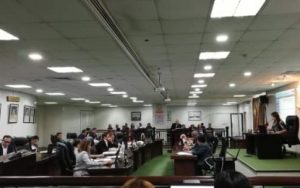By Gail Momblan/Philippine News Agency

ILOILO CITY — The Sangguniang Panlalawigan (SP) of Iloilo has placed Iloilo province under state of calamity due to dengue during its regular session on Tuesday afternoon.
The Provincial Disaster Risk Reduction and Management Council (PDRRMC) forwarded the resolution requesting for such declaration to the SP on Monday morning.
In an interview shortly after the session, Vice Governor Christine Garin told the media that the provincial government has allotted PHP26.5-million calamity fund for the mitigating measures.
Garin said the budget was decreased by PHP1.5-million from the original PHP28-million fund proposed by the PDRRMC.
“We slashed PHP1.5-million because there are items that we do not really need for now,” she said.
Item on the information dissemination was reduced, Garin said, as she said there is already massive dengue awareness among Ilonggos.
She said the hospitals and Rural Health Units (RHUs) need medical and laboratory supplies as the province have an estimated 200 new dengue cases per day.
Data from the PHO from January 1 to July 13 shows that cases of dengue in Iloilo have reached 6,806 with 23 deaths.
Dengue cases in Pototan town have reached 713; Passi City has 458; Sara has 378; Concepcion has 333, and Lambunao has 293.
Dr. Jerry Bionat, PDRRM office head, said items that will be purchased through the calamity fund are adulticide and fogging equipment; dengue test kits, oral rehydration solutions, mosquito repellent, olyset nets, among others, for the Provincial Health Office (PHO); and dextrose, paracetamol, disposable syringe, oxygen, adhesive plasters, among other medical and laboratory supplies for the Hospital Management Office (HMO).
The needs of the Rural Health Units in every local government unit are sourced from the PHO while the needs of the 12 district hospitals are sourced from the HMO.
The charges of the measures will be made against the available PDRRM Quick Response Fund of the government, the resolution states.
Bionat said the declaration is based on the revised guidelines for the declaration of state of calamity of the National Disaster Risk Reduction and Management Council.
Under the said guidelines, a state of calamity can be declared “when there is an extremely high incidence of a certain disease whether communicable or non-communicable within a community, in a specific period of time, specific health-related behavior, or other health-related events clearly beyond normal expectancy.”
For the latest updates about this story, visit the Philippine News Agency website.
